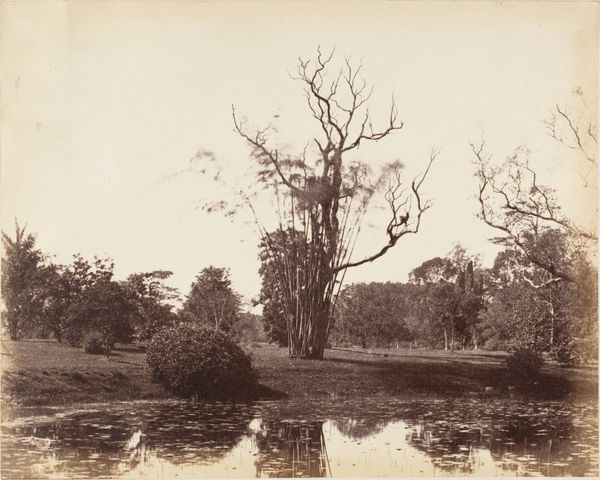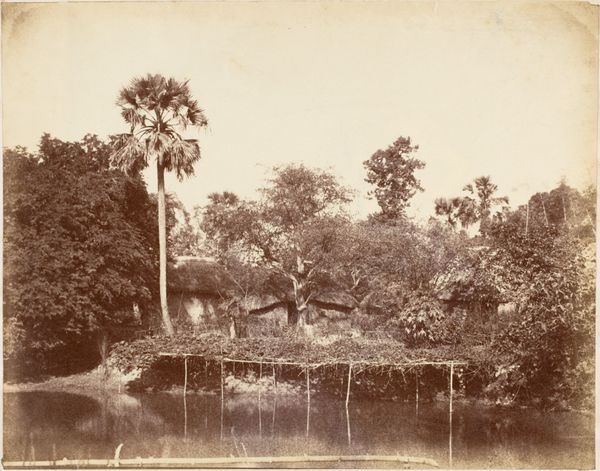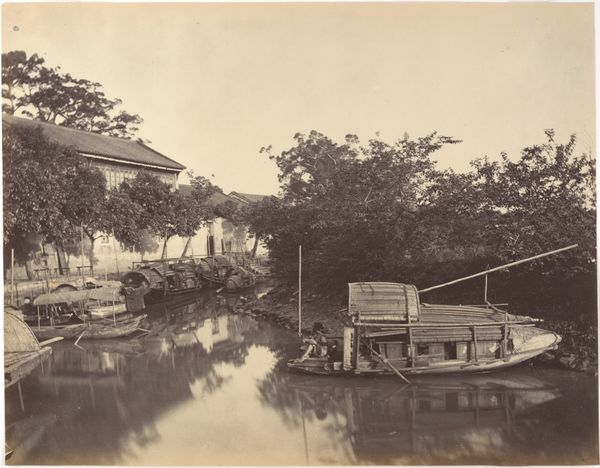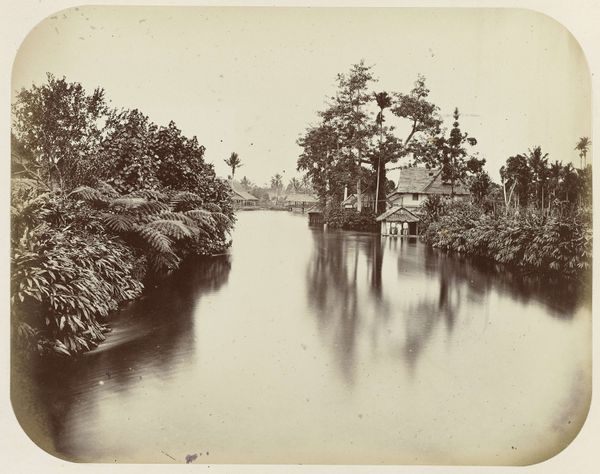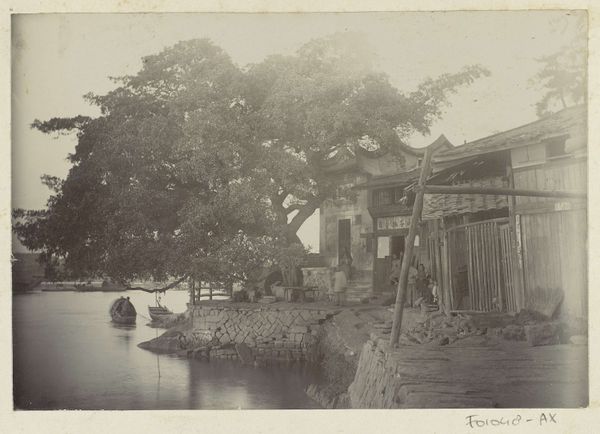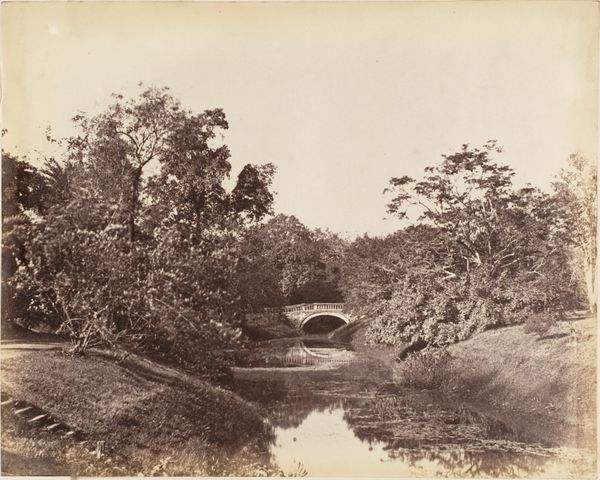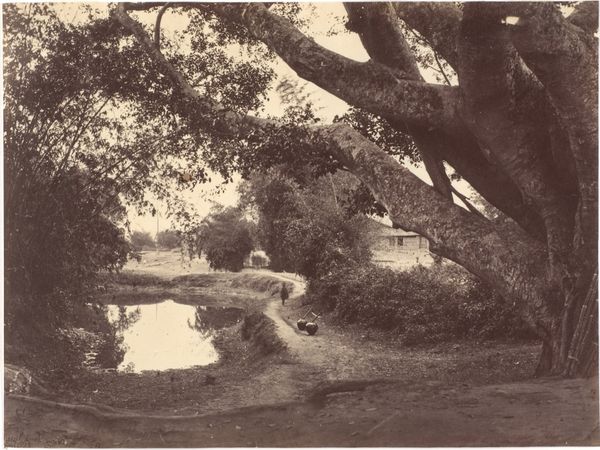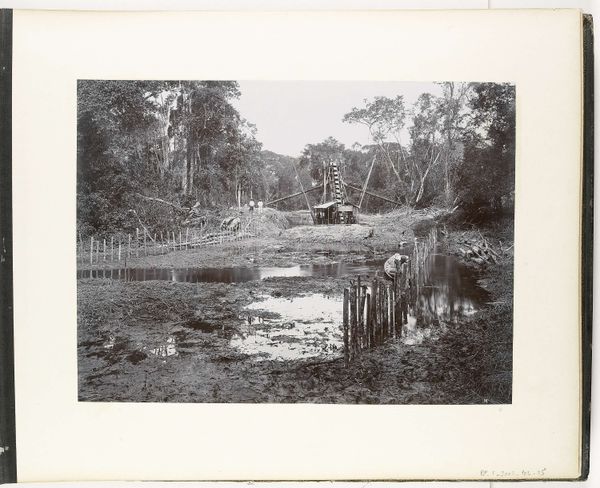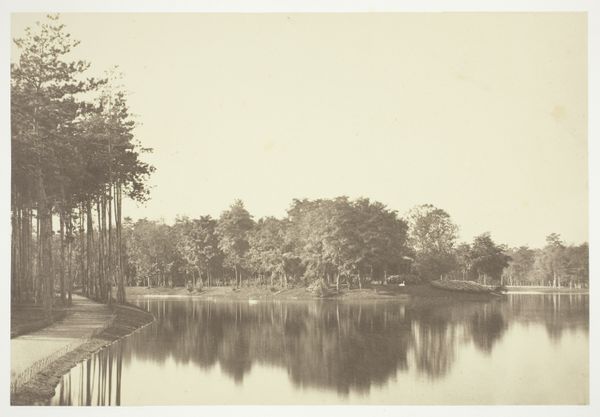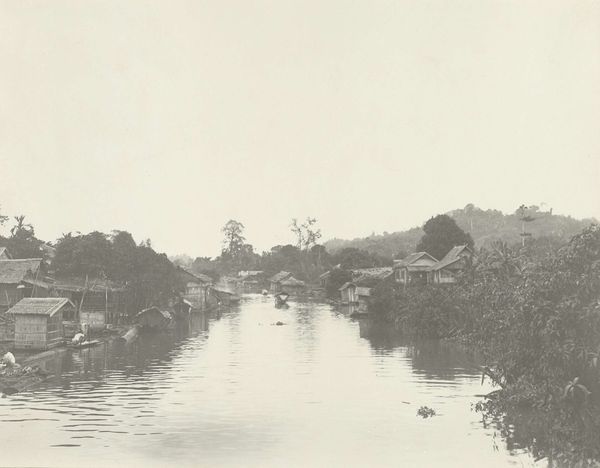
photography, albumen-print
#
asian-art
#
landscape
#
photography
#
geometric
#
orientalism
#
albumen-print
Dimensions: Image: 6 15/16 × 9 7/16 in. (17.6 × 23.9 cm)
Copyright: Public Domain
Curator: This is an albumen print titled "Factory and Silkworm Nursery, Foochow" created in 1869 by John Thomson. Editor: It's a rather serene landscape, isn't it? A classical composition featuring still water, a small footbridge, and a somewhat secluded structure beneath the outstretched boughs of a prominent tree. The overall tonality conveys a sense of quiet contemplation. Curator: Thomson's work is fascinating because it reveals so much about the Western gaze directed toward Asia during this period. The "Orientalist" label can be applied, but it’s crucial to understand that photography was simultaneously a tool of documentation and a means of constructing specific narratives about non-Western cultures. Editor: Exactly. And we can interpret this scene through the lens of industry and labor practices too. How were labor forces recruited, exploited, and compensated within such factory settings in Foochow during this era? Was the romantic vision promoted at odds with the human experience? Curator: It's imperative that we consider the representation of labor within such compositions and assess the work’s role within broader conversations about colonialism and trade. While Thomson's skill is undeniable, it's just as vital to think about whose perspectives are prioritized, and often valorized, versus the voices systematically muted or omitted. Editor: Yes, considering photography’s rise amidst imperial endeavors makes these seemingly tranquil scenes rather charged. The medium, while allowing an understanding of place, was instrumental in controlling the narrative of otherness. And how were these circulated for propaganda within the British empire at large? What are the visual politics at play here? Curator: These layers prompt important questions concerning identity, agency, and the power dynamics inherent to representation, so while Thomson delivers an aesthetically compelling photograph, we should use this piece as a starting point to critically engage with the ethics of photographic practices that continue to reverberate today. Editor: Precisely. It's a lovely view, indeed. And that understanding is, ultimately, what spurs necessary inquiries around colonial enterprises and the legacy they imparted—through visual documentation, yes, but reaching farther still.
Comments
No comments
Be the first to comment and join the conversation on the ultimate creative platform.
